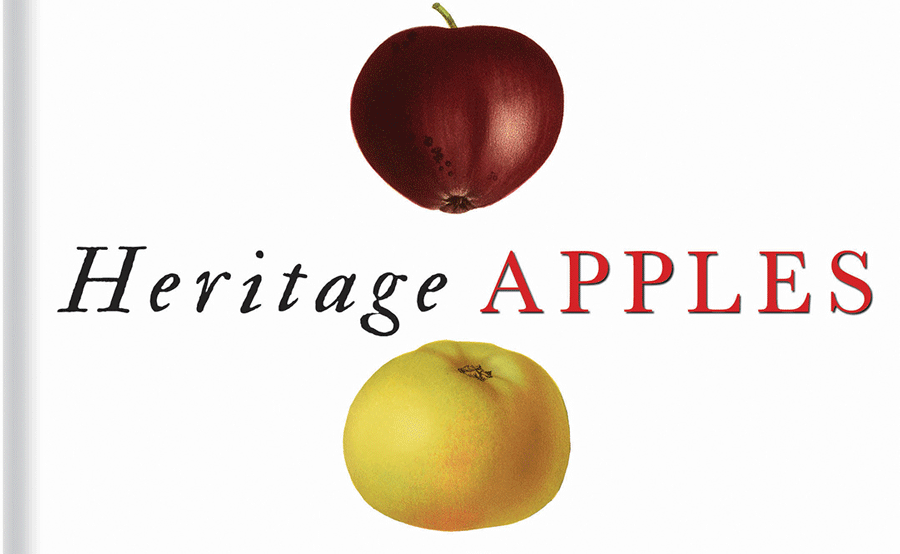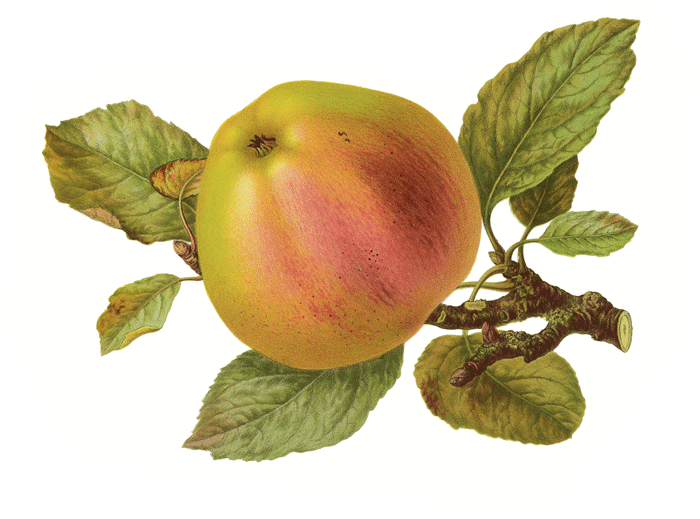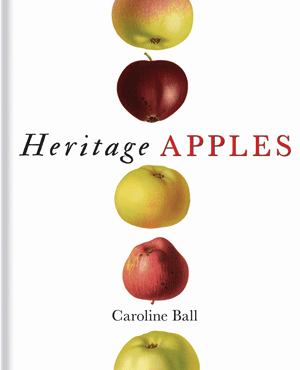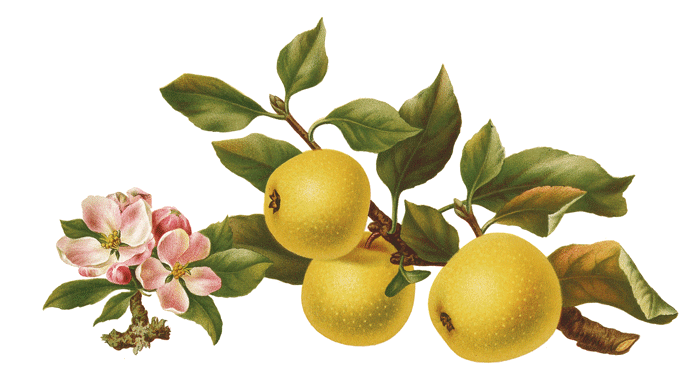Heritage Apples – a Review
 The last century has seen the loss of much of our rich heritage of orchard fruits, but with taste once again triumphing over shelf-life and a new understanding of the vital importance of diversity, we are rediscovering the delights of that most delicious and adaptable of fruits – the apple.
The last century has seen the loss of much of our rich heritage of orchard fruits, but with taste once again triumphing over shelf-life and a new understanding of the vital importance of diversity, we are rediscovering the delights of that most delicious and adaptable of fruits – the apple.
In ‘Heritage Apples‘, Caroline Ball, herself born a ‘Kentish Maid’, brings together a selection of a hundred apples from the era of ‘The Herefordshire Pomona’. (Pomonas are finely illustrated fruit books named after the Roman goddess of gardens and orchards, popular in the 19th century).
In 1883, following threats to the domestic apple market, the Royal Horticultural Society hosted a National Apple Congress with the aim of examining the numerous varieties cultivated throughout the country to ‘correct their nomenclature and to compare their merits‘. The Congress was so successful, they received 1,545 varieties and the public flocked to see them – the British once again fell in love with the apple.
 (pictured above: the Loddington)
(pictured above: the Loddington)
Against this background and at the height of the Victorian era, the Woolhope Naturalists Field Club published ‘The Hereford Pomona’, an enormous undertaking for a small rural club. Originally, it contained just six plates and accompanying text and was published in 1876, however, over time it grew as the decision was taken to include apples and pears from all over the country, not just Herefordshire, eventually comprising 77 plates when completed.
 The book was richly illustrated with apple and pear varieties and an authoritative accompanying text, ranging far beyond the initial aspiration of a county record. The result, as Caroline points out, remains a horticultural and artistic treasure. The original Pomona was not completely devoid of North American varieties but the emphasis was on British-bred (or historically long-resident European) ones.
The book was richly illustrated with apple and pear varieties and an authoritative accompanying text, ranging far beyond the initial aspiration of a county record. The result, as Caroline points out, remains a horticultural and artistic treasure. The original Pomona was not completely devoid of North American varieties but the emphasis was on British-bred (or historically long-resident European) ones.
The apple ‘portraits’ were the product of Edith Bull, a talented watercolourist, with all but two of the apple ‘portraits’ in the Pomona faithfully rendered by Miss Bull and a fellow artist, Alice Ellis, a gold medallist graduate of the Bloomsbury School of Art.
In ‘Heritage Apples‘ we are offered a selection of apples from this era, illustrated with those exquisite Victorian paintings. All the varieties are still available today, from the familiar Blenheim Orange and Worcester Pearmain to the less feted yet delicious Ribston Pippin. The wonderful Loddington apple and a very old variety, Golden Pippin Apple have their place with each entry having a beautiful illustration, a short description and details about disease resistance, fertility and harvest.
The sheer beauty of the paintings from The Herefordshire Pomona, reproduced in this new book, are simply delightful and serve for easy identification of the apples, making it easier to identify a Yorkshire Greening from a Tom Putt or Striped Beefing.
In the Introduction Caroline leads us through a brief history of the apple, from its possible origins in the fruit forests of the Kyrgyzstan Kazakhstan-Chinese Border through to Roman times and down to the present day. The apple not only hybridizes easily but is highly adaptable, so just as the Romans established it through much of their empire, the British colonialists die the same and North America, Australasia, South Africa and even cooler regions in India came to grow apples in abundance.
 (pictured above: Golden-Pippin)
(pictured above: Golden-Pippin)
The book is a rich source of information both for someone who wants to grow or grows heritage apples and for those who are interested in them both for their taste and in this instance their botanical beauty. Included, in addition to descriptions of each apple, is a chapter on flowering and pollination times; choosing trees; planting and nurturing as well as pests and diseases. The author has also included a useful section on where to see, taste and buy heritage apples.
The author is an editor and copywriter who has written on a range of subjects ranging from horticulture and travel to antiques, she has contributed to books about William Morris and a guide to historical sites.
‘Heritage Apples‘ by Caroline Ball is published by the Bodleian Library – www.bodleianshop.co.uk – in hardback priced at £25.00.
Review copy kindly supplied by the publisher.
photo credits: all images strictly ©Folio Society, 2019.

